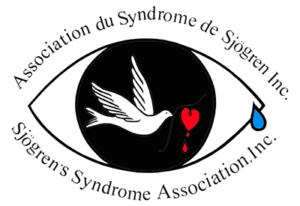Sjögren’s Syndrome
Sjögren's syndrome (pronounced "sjeu-greunne"), is an incurable chronic disease of the immune system that affects approximately 1% of the general population. women represent 90% of diagnosed cases. The disease most often appears around the age of 50, but it is also observed in children and young adults but more rarely.
Sjögren's syndrome is a chronic autoimmune disease in which the immune system attacks the glands that produce saliva (salivary glands) and tears (lacrimal glands). Damage to the salivary glands reduces saliva production, leading to a feeling of dryness in the mouth and problems with dental caries. Damage to the tear glands causes excessive dryness in the eyes with a feeling of sand in the eyes, requiring regular use of artificial tears. Sjögren's syndrome is often nicknamed "dry eye and dry mouth syndrome", but can also affect other organs such as the lungs, kidneys, lymphatic system and neurological system. It is a disease that can affect the entire body. We recognize without hesitation that rheumatic discomfort and fatigue are also two important symptoms of Sjögren's syndrome.
When Sjögren's syndrome occurs alone without other connective tissue diseases, it is called primary Sjögren's syndrome. The secondary syndrome is that which is associated with other connective tissue diseases such as lupus, rheumatoid arthritis, myositis and scleroderma. The prevalence of primary syndrome and secondary syndrome is approximately equal.
Although there is no known cure for Sjogren's syndrome, many of its symptoms can be relieved with simple corrective measures and consumer or prescription medications.
This information is intended for educational purposes only and is not a substitute for consultation with a healthcare professional.
